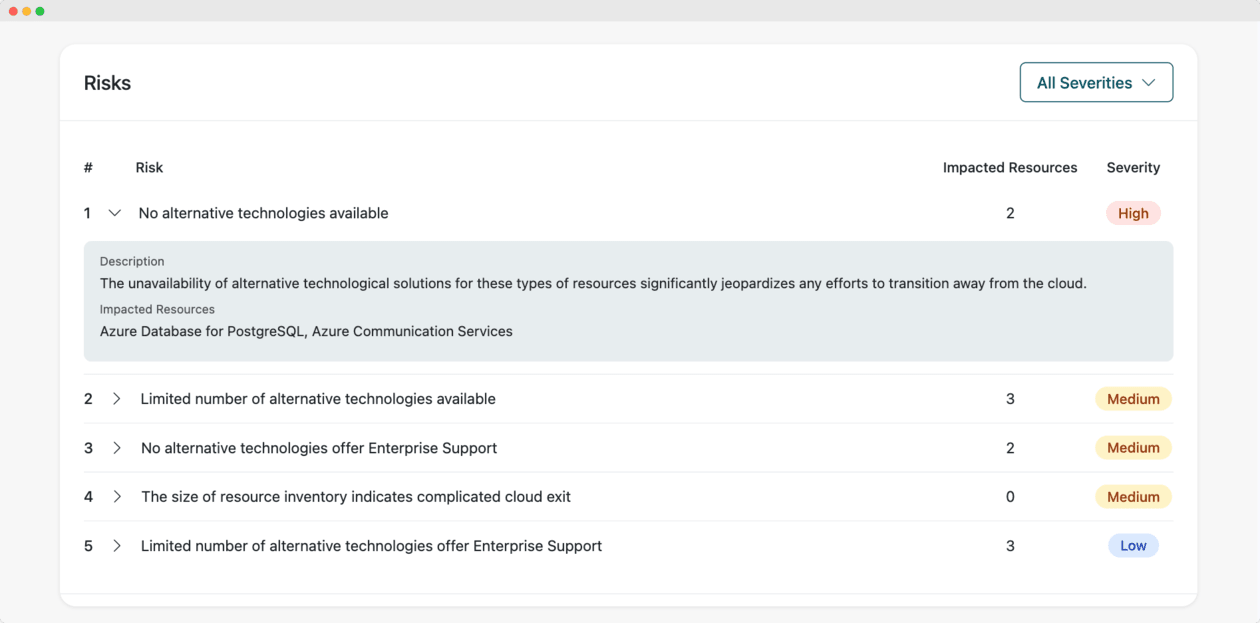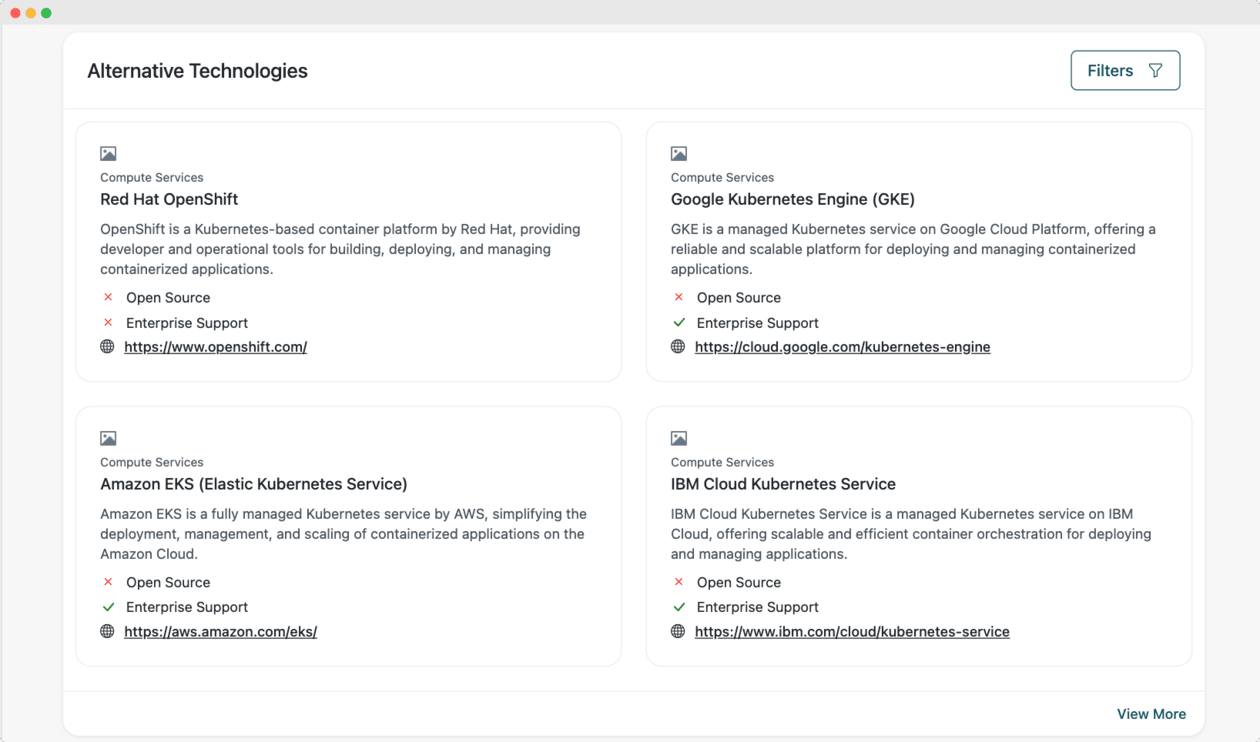
In the journey toward a successful cloud exit, understanding the risks associated with such a transition is crucial. Following the completion of the Resource Inventory and Cost Inventory stages, the EscapeCloud Platform’s assessment engine proceeds to the Risk Assessment & Exit Scoring stage. This stage evaluates potential risks based on the data gathered from the previous stages, applying predefined rules to gauge the complexity and challenges of a cloud exit. The outcome of this assessment not only highlights areas of concern but also produces an Exit Score, providing organizations with a clear metric to guide their exit strategy.
The Role of Risk Assessment in Cloud Exit Planning
The Risk Assessment stage leverages the detailed data collected during the Resource Inventory and Cost Inventory phases. By analyzing this information, the assessment engine identifies potential risks that could impact the cloud exit process. These risks are evaluated based on a set of predefined rules, ensuring a consistent and thorough analysis.
One of the key factors considered in the Risk Assessment is the availability of alternative technologies for the cloud resources or services in use. For instance, if a particular resource lacks alternative solutions in the market, this poses a significant risk to the cloud exit, as the organization may struggle to replace that functionality. Conversely, if there are multiple viable alternatives available, the risk is considerably lower. Additionally, the availability of enterprise support or the use of open-source technologies can further mitigate risks, providing flexibility and additional options during the transition.
Another critical aspect is the complexity of the cloud environment itself. The Risk Assessment considers the number of different resources and services within the defined scope. A greater number of distinct resources increases the complexity of the exit, potentially introducing more points of failure and requiring more extensive planning and execution.
Exit Scoring: Quantifying the Risk
Following the Risk Assessment, the identified risks are quantified through the Exit Scoring process. Each risk is assigned a score based on its severity, with higher scores indicating lower risk. If the risk is associated with specific cloud resources or services, the scores are averaged to provide an overall risk level for those resources. For risks associated with the entire defined scope, a scale from 1 to 5 is used to measure the potential impact.
The final Exit Score is a combination of these risk evaluations, offering a clear indication of the overall risk profile of the cloud exit. A higher score suggests a smoother, less risky transition, while a lower score indicates areas where careful management and mitigation strategies will be essential.
Conclusion
The Risk Assessment & Exit Scoring stage of the EscapeCloud Platform provides a crucial evaluation of the risks associated with a cloud exit. By analyzing factors such as the availability of alternative technologies and the complexity of the resource inventory, it quantifies these risks into a clear and actionable Exit Score. This score serves as a guiding metric for organizations, helping them understand the potential difficulties in their exit strategy and empowering them to take proactive steps to mitigate these risks. As cloud exit strategies become increasingly important, the insights provided by this stage are invaluable for ensuring a smooth and successful transition.


